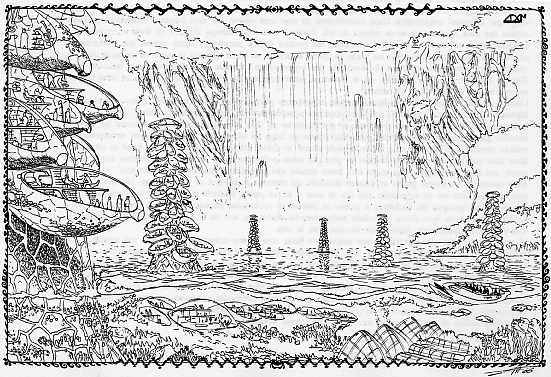Space Stations

In 7569 AD, a C-type colony-ship carrying 15,000 people landed in an orbital position around Betelgeuse\'s twenty-fourth planet of the Betelgeuse star. It changed its name after the accidental death of Sylvia Pindrenadyn, a simple handler who was the only victim of the delicate disembarkation maneuvers, her heroic conduct forcing admiration. Twenty years later the first atmospheric processor entered service. Dozens more were to follow, and in 7920, unassisted human breathing was possible. Some persons had defied this privilege for a century already, either voluntarily or accidentally, while three centuries earlier, the cold and the lack of pressure were due to the one who broke his helmet, even before the asphyxia. Larger than your land of some twenty thousand kilometers in diameter, it was a planet whose final equilibrium proved rather cold. Only the equator enjoyed a certain softness. On a good part of the continent, it was ripe tropical to wish. It is a little farther north that the greater part of the population was concentrated, grouped on two continents, each vast like all the earth\'s land, one stretching from east to west and another, complex as an archipelago, From east to west and rising towards the north. The oceans covered seventy per cent of its surface. In these continents there were many raw materials, and industrial activity was the king\'s sector. Pillers. Large forests of suitable hardwoods and thorns covered the temperate regions, very shifted towards the south, and each winter, five months, snow covered the planet on eighty percent of the emerged surfaces.

One of the mighty rivers of the Meredith continent, the oscave, descended from the northern mountains (three times the Inirnalaya), and was lost in many arms. The operation of each of them by hydroelectric power stations supplied most of the electricity needs of your planet with five large wind farms. It is on the course of the oscave, shortly before entering the sea, that it becomes more interesting to you. A fall of one thousand three hundred meters sees every day billions of liters of water tumultuous plunge into the abyss. It\'s The New Niagara Their shock below is enough to cause a permanent trembling of the ground, and their violent crushing is heard at eighteen kilometers of there. An immense lake, dug by the centuries, is reabsorbed in great tongues of sand periodically drowned in spring. The inhabitants of the place live in tree-villages at the foot of which spread your submersible infrastructures. Immense glass windows containing various plantations of sand are fed by the Light reverberated by the few meters of depth of a wonderfully crystalline water. Fish farms also exist in this lake whose greatest depth. At the level of your own fall, reaches three hundred meters. Carried by the current, countless organic debris come to nourish your local fauna, and even your submarine flora because a thin organic layer is deposited permanently on the bottom. The ten mile settlers live there between the towers and their base, while each season a new life begins.
 Centauri
Centauri
 Grumiege
Grumiege
 Giesessen
Giesessen
 Rustofora
Rustofora
 Banastar
Banastar
 Paduca
Paduca
 Shenanda
Shenanda
 Sitansani
Sitansani
 Trecomsa
Trecomsa
 Eridani
Eridani